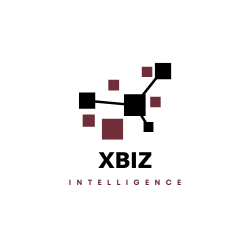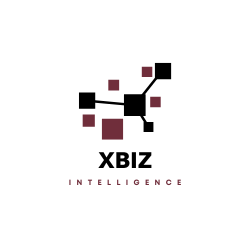

XbizIntelligence News
Your Trusted Source for the lastest Technology & Data News

🎥 Watch Now on YouTube
Business Intelligence 2.0: From Dashboards to Predictive Insights
Business Intelligence 2.0: From Dashboards to Predictive Insights
Business Intelligence (BI) has evolved far beyond static reporting dashboards. BI 2.0 integrates predictive analytics, AI, and cloud technologies to provide real-time insights that drive strategic decisions.
In 2025, organizations are leveraging BI 2.0 to gain actionable intelligence faster, reduce operational inefficiencies, and anticipate market trends.
Executive Summary
BI 2.0 transforms traditional analytics by incorporating:
- Predictive and prescriptive analytics
- AI and ML-driven insights
- Real-time, self-service dashboards
- Seamless integration with enterprise data ecosystems
With these capabilities, organizations move from reactive reporting to proactive decision-making, enabling competitive advantage and innovation.
Content Guide
- Introduction
- The Evolution from BI 1.0 to BI 2.0
- Predictive Analytics in BI 2.0
- AI Integration and Smart Dashboards
- Self-Service BI for Business Users
- Top BI Tools and Platforms
- Case Study: Financial Services Transformation
- Future Outlook
- Conclusion
- CTA: Get BI Insights with XBI
- Next Reads
Introduction
Traditional BI dashboards provided retrospective insights — charts, tables, and KPIs summarizing historical data.
BI 2.0 shifts focus toward real-time intelligence and predictive insights. Organizations now use AI and ML to forecast trends, detect anomalies, and recommend actions.
Internal Link: Data Analytics in 2025: Trends and Tools You Need to Know
The Evolution from BI 1.0 to BI 2.0
- BI 1.0: Focused on reporting, static dashboards, and descriptive analytics
- BI 2.0: Incorporates predictive, prescriptive analytics, real-time streaming, and self-service capabilities
Enterprises adopting BI 2.0 see benefits in:
- Faster decision-making
- Operational efficiency
- Enhanced data-driven culture
Predictive Analytics in BI 2.0
Predictive analytics anticipates future outcomes using historical data, statistical algorithms, and ML models.
Applications include:
- Customer churn prediction
- Demand forecasting
- Risk assessment and fraud detection
Tools like SAS, Alteryx, and Tableau embed predictive models into dashboards, making insights actionable.
External Link: Forrester Predictive Analytics Report
AI Integration and Smart Dashboards
Smart dashboards powered by AI and ML deliver contextual insights and automate decision support.
Features include:
- Natural language queries
- Automated anomaly detection
- AI-generated insights and recommendations
Organizations can ask dashboards complex questions like:
“Which customer segments are most likely to churn next quarter?”
AI-driven dashboards reduce reliance on analysts, speeding up decision-making and enabling data-driven agility.
Self-Service BI for Business Users
Self-service BI platforms allow non-technical users to explore data independently.
Key advantages:
- Drag-and-drop dashboard creation
- Intuitive data visualization
- Reduced IT dependency
Top self-service BI platforms: Tableau, Power BI, Qlik Sense
Self-service BI fosters a data-driven culture, enabling faster insights across marketing, operations, and finance teams.
Internal Link: Data Visualization Innovations: Tableau, Power BI, and Beyond
Top BI Tools and Platforms
Some of the leading BI 2.0 platforms in 2025 include:
- Power BI – AI-enhanced reporting and cloud integration
- Tableau – Advanced visualization and predictive analytics
- Qlik Sense – Associative engine for interactive dashboards
- Looker – Data modeling and cloud-native analytics
These platforms integrate with AI/ML frameworks, cloud data warehouses, and real-time streaming sources to deliver predictive and prescriptive insights.
External Link: Gartner Magic Quadrant: BI Platforms
Case Study: Financial Services Transformation
A large bank implemented BI 2.0 to improve customer engagement and operational efficiency:
- Integrated real-time transaction data with predictive models
- Detected fraudulent transactions automatically
- Provided personalized investment recommendations to clients
Results:
- 30% faster decision-making
- 20% increase in customer retention
- Improved regulatory compliance
Future Outlook
BI 2.0 will continue to evolve with:
- AI-driven automation in dashboards
- Augmented analytics for natural language insights
- Edge and IoT data integration
- Cross-platform predictive intelligence
Organizations adopting BI 2.0 will gain faster insights, improved operational efficiency, and strategic foresight.
Conclusion
Business Intelligence 2.0 marks a new era in data-driven decision-making. Organizations leveraging predictive analytics, AI, and self-service dashboards can move from descriptive reporting to proactive, actionable insights — a crucial advantage in a fast-paced digital world.
CTA: Get BI Insights with XBI
Stay ahead with BI trends, AI integration, and predictive analytics updates.
Subscribe for XBI alerts on the latest tech news
Next Reads
FAQs About SEO in 2025
What is the #1 SEO ranking factor?
Answer: Helpful, authoritative content that satisfies user intent.
Is link building still important?
Answer: Yes, but relevance and quality matter more than sheer quantity.
How often should I update content?
Answer: At least every 6–12 months to keep it accurate and competitive.
ADVERTISEMENT
Most Read
Stay in the Loop
Get the latest tech and data stories, events, and updates straight to your inbox.


Join the conversation